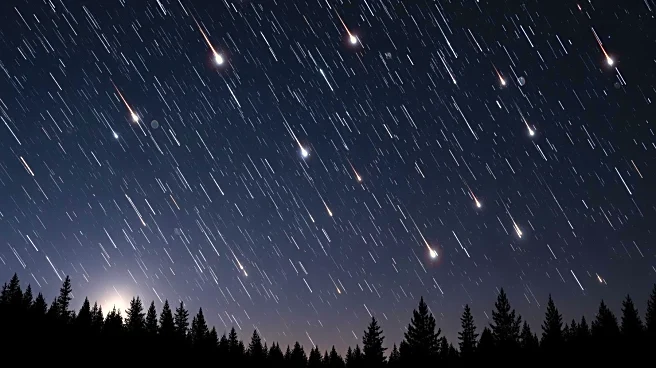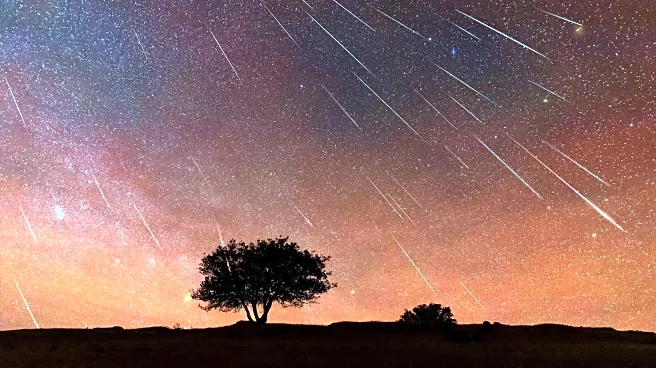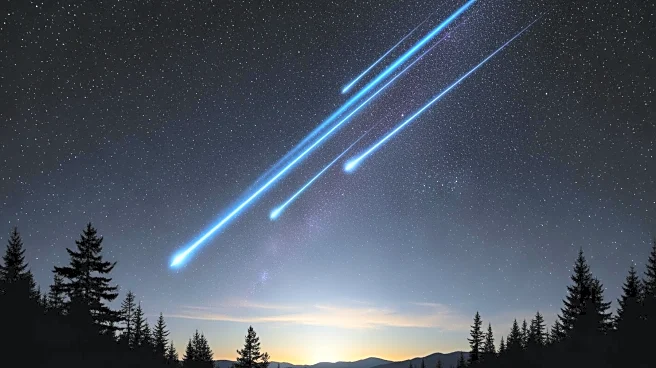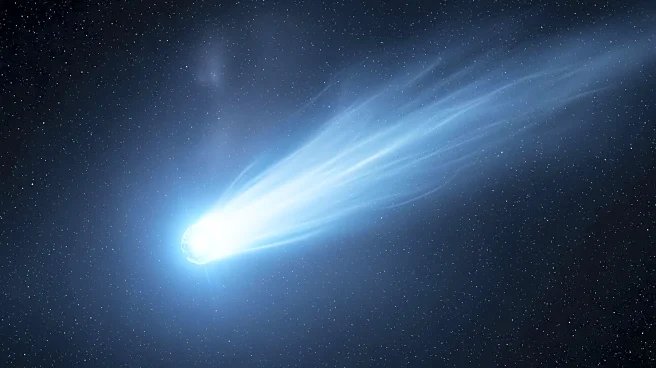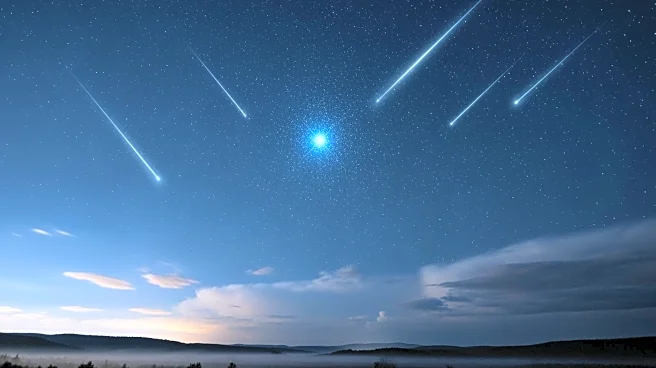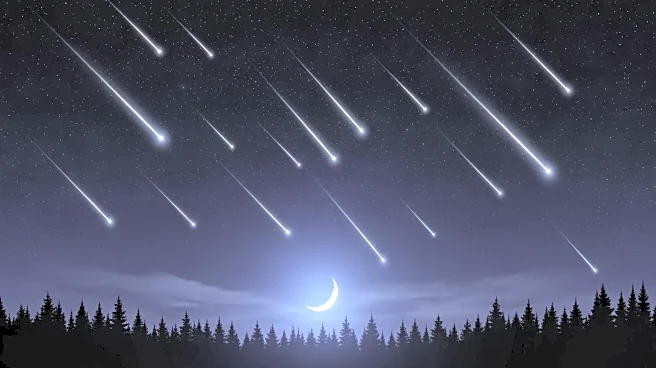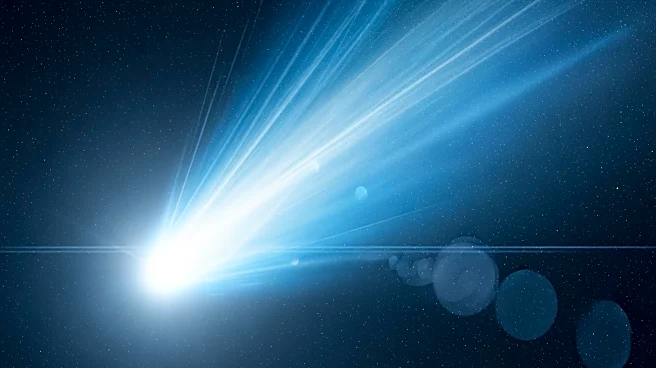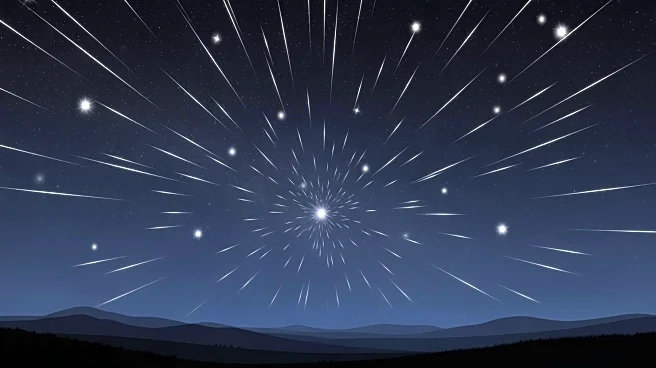What's Happening?
The Geminid meteor shower, known for its bright and colorful meteors, is set to peak on the night of December 13-14, 2025. This annual event is one of the most anticipated meteor showers, with the potential
to display up to 120 meteors per hour under ideal conditions. The meteors appear to radiate from the constellation Gemini, near the star Castor. The shower will be visible from the Northern Hemisphere, even on the nights before and after its peak. The Geminids originate from the asteroid 3200 Phaethon, which is unique as most meteor showers are caused by comets. The December full moon, known as the 'cold moon', will coincide with the start of the Geminid shower, providing a spectacular celestial display.
Why It's Important?
Meteor showers like the Geminids offer a unique opportunity for astronomical observation and public engagement with science. They are accessible events that can be enjoyed by people without specialized equipment, fostering interest in astronomy and science education. The Geminids, being one of the most active meteor showers, provide a chance for both amateur and professional astronomers to study meteoroid composition and behavior. Additionally, such events can boost local economies through tourism, as people travel to areas with optimal viewing conditions. The timing with the full moon enhances the spectacle, making it a significant event for skywatchers.
What's Next?
Following the peak of the Geminid meteor shower, observers can continue to enjoy the display until December 17, 2025. The winter solstice will follow shortly after, on December 21, marking the shortest day of the year. This period offers extended opportunities for night sky observation. As the Geminids are visible from the Northern Hemisphere, astronomy clubs and observatories may organize viewing events to maximize public engagement. The next major meteor shower will be the Quadrantids in January, providing another opportunity for skywatching.
